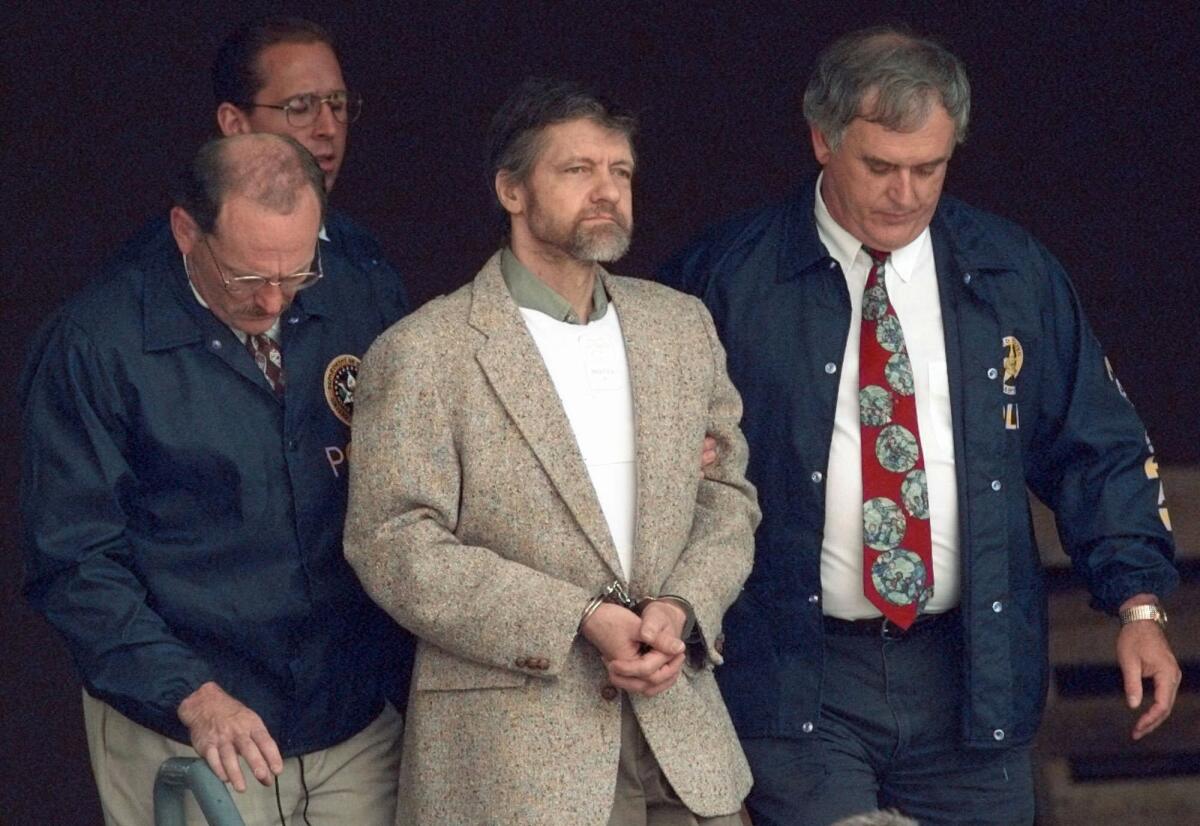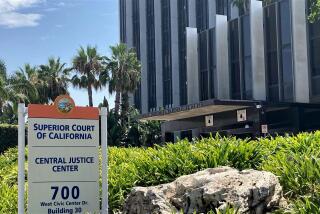Unabomber Ted Kaczynski transferred from Supermax prison to a medical facility

- Share via
DENVER — The man known as the Unabomber has been transferred to a federal prison medical facility in North Carolina after spending the last two decades in a federal Supermax prison in Colorado for a series of bombings targeting scientists.
Theodore “Ted” Kaczynski, 79, was moved to Federal Medical Center Butner in eastern North Carolina on Dec. 14, according to U.S. Bureau of Prisons spokesperson Donald Murphy. Murphy declined to disclose any details of Kaczynski’s medical condition or the reason for his transfer.
Kaczynski is serving life without the possibility of parole following his 1996 arrest at the primitive cabin where he was living in western Montana. He pleaded guilty to setting off 16 explosions that killed three people and injured 23 others in various parts of the country between 1978 and 1995.
FMC Butner, in North Carolina’s Granville County, just northeast of Durham, offers medical services for prisoners, including oncology, surgery, neurodiagnostics and dialysis, according to the Bureau of Prisons. It opened an advanced care unit and a hospice unit in 2010.
Butner has 771 inmates, according to the bureau, and has been home to notable offenders such as John Hinckley Jr., who was evaluated there after shooting President Reagan, and Bernie Madoff, the infamous architect of a massive Ponzi scheme, who died at the North Carolina facility earlier this year.
In November, the former Oklahoma zookeeper known as “Tiger King” Joe Exotic was transferred to the facility after a cancer diagnosis, his attorney said. Joe Exotic, whose real name is Joseph Maldonado-Passage, had been convicted for trying to hire someone to kill an animal rights activist and for violating federal wildlife laws.
The deadly homemade bombs that the vengeful Kaczynski sent by mail — including an altitude-triggered explosion that went off as planned on an American Airlines flight — changed the way Americans sent packages and boarded airplanes.
A 1995 threat to blow up a plane out of Los Angeles before the end of the Fourth of July weekend threw air travel and mail delivery into chaos. The Unabomber later claimed it was a “prank.”
The Harvard-trained mathematician had railed against the effects of advanced technology and led authorities on the nation’s longest and costliest manhunt. The FBI dubbed him the Unabomber because his early targets seemed to be universities and airlines.
In September 1995, the Washington Post and the New York Times published his anti-technology manifesto, “Industrial Society and Its Future.” The manifesto was printed at the urging of federal authorities, after the bomber said he would desist from terrorism if a national publication published his treatise.
Here is an overview of the life of Theodore Kaczyniski, the events leading up to his arrest and trail: A SOLITARY LIFE May 22, 1942: Born in Chicago.
The treatise led his brother David and David’s wife, Linda Patrik, to recognize his writing and turn him in to the FBI.
Authorities in April 1996 found Kaczynski outside Lincoln, Mont., in a 10-foot-by-14-foot plywood and tarpaper cabin where he’d been living since the 1970s. It was filled with journals, a coded diary, explosive ingredients and two completed bombs.
Kaczynski hated the idea of being viewed as mentally ill and, during his trial, tried to fire his attorneys when they wanted to mount an insanity defense. He eventually pleaded guilty rather than let his attorneys proceed.
In his personal journals, released at the trial by the government at the request of the victims’ families, Kaczynski described his motive as “simply personal revenge.”
“I often had fantasies of killing the kind of people I hated — i.e., government officials, police, computer scientists, the rowdy type of college students who left their beer cans in the arboretum, etc., etc., etc.,″ he wrote.
Kaczynski killed computer rental store owner Hugh Scrutton, advertising executive Thomas Mosser and timber industry lobbyist Gilbert Murray. California geneticist Charles Epstein and Yale University computer expert David Gelernter were maimed by bombs two days apart in June 1993.
More to Read
Sign up for Essential California
The most important California stories and recommendations in your inbox every morning.
You may occasionally receive promotional content from the Los Angeles Times.











